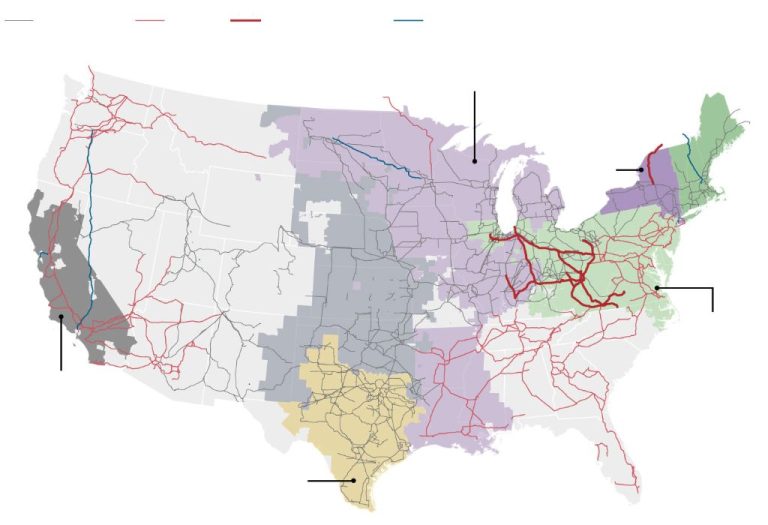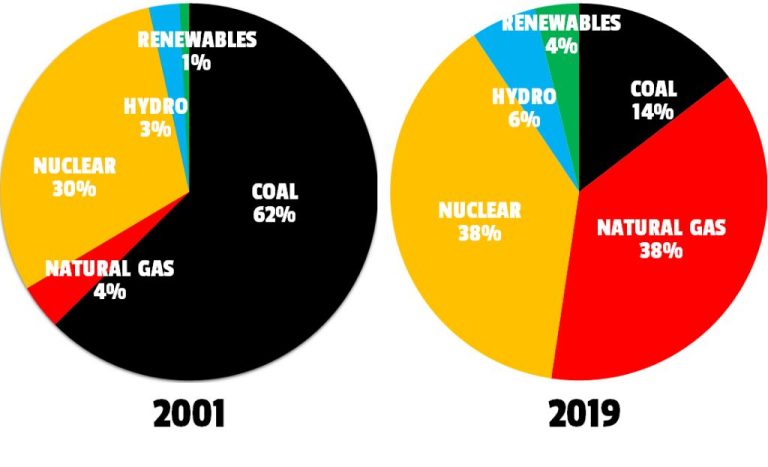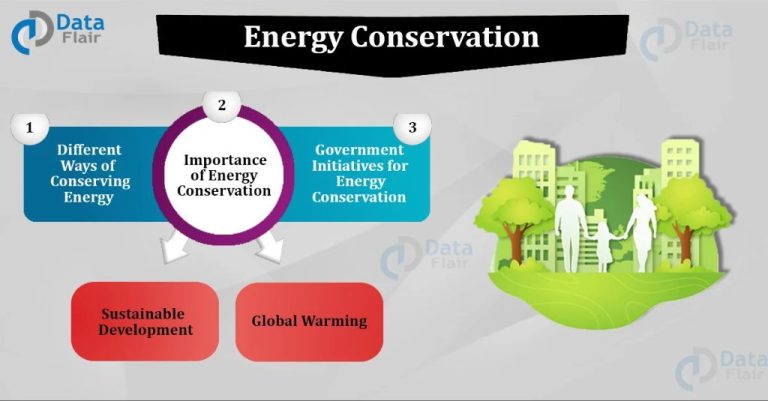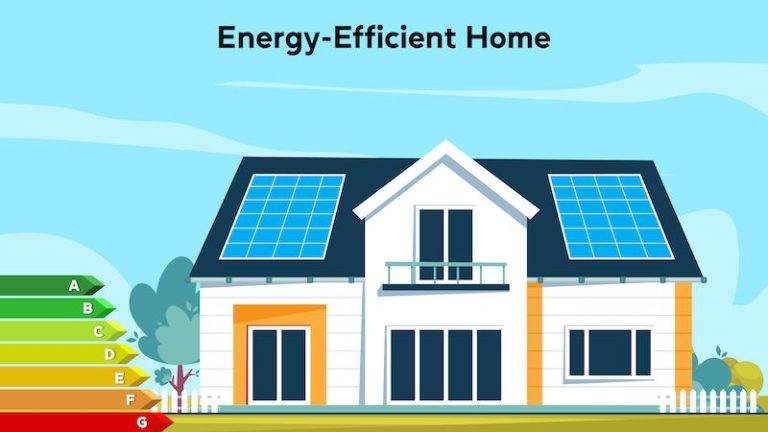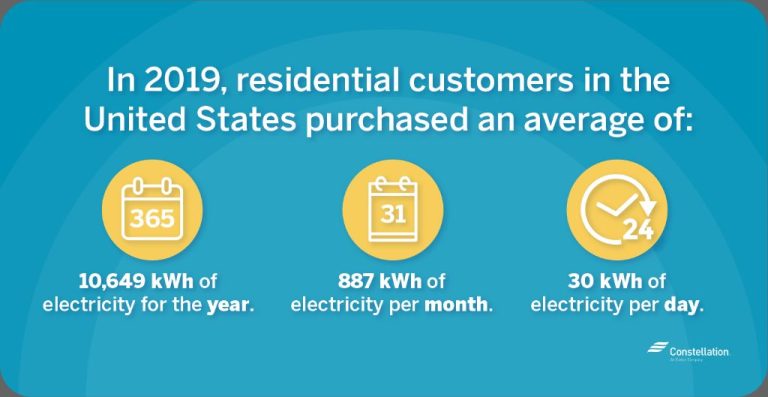Is Renewable Energy Reliable
Renewable energy has become a major buzzword in recent years, as concerns about climate change and depleting fossil fuel reserves continue to grow. From solar panels to wind turbines, there are now various forms of renewable energy that promise a cleaner and more sustainable future. However, despite its growing popularity, the reliability of renewable energy is often called into question. Can we truly rely on these alternative sources for our electricity needs? In this blog post, we will delve into the debate surrounding the reliability of renewable energy and explore both sides of the argument to determine whether or not it can be considered a reliable source of power.
Exploring The Reliability Of Renewable Energy Sources
As the world’s population grows and industrialization expands, the demand for electricity is reaching unprecedented levels. The current sources of energy, dominated by fossil fuels that are harmful to the environment, are no longer sustainable nor sufficient in satisfying the world’s energy needs. Renewable energy, on the other hand, has the potential to offer a cost-effective and cleaner solution to combat climate change while providing energy security. However, there is a simmering debate on the reliability of renewable energy sources.
Solar and wind power, among other renewable sources, are dependent on variable natural elements and unpredictable weather patterns. This unpredictable nature creates concerns about their reliability and consistency, as they are subject to fluctuations in temperature, cloud cover, wind speed, and other factors beyond human control. Critics of renewable energy argue that this variability poses a potential danger to power grids and energy systems’ stability. In contrast, advocates of renewable energy have proposed solutions to counterbalance this concern.
One of the most effective solutions is the deployment of a mix of renewable energy sources. The incorporation of various renewable energy sources could overcome the limitation of variability and ensure a consistent power supply. For instance, solar and wind power complement each other in providing a more balanced energy mix. While solar power can generate electricity during the day, wind turbines produce energy throughout the night, guaranteeing a steady energy supply. Additionally, there is the option of energy storage technology to store unused energy to be peaked later.
Furthermore, renewable energy can already boast of being a highly reliable energy source, particularly in certain circumstances. Remote areas such as islands and rural communities, for example, have used renewable energy sources as households’ primary energy source with considerable success. Renewable energy systems in these areas can survive high winds, heavy rainfall, and even hurricanes, thus demonstrating their reliability.
Additionally, industry experts agree that renewable energy technologies have seen a steady increase in reliability and efficiency. The wind and solar energy industry has matured significantly over the last decade, leading to advancements in solar panels’ efficiency and wind turbines’ size and other technologies such as Biomass energy. These developments have enhanced their dependability and overall performance, making them more practical for large-scale integration into the electric grid.
Understanding The Challenges And Benefits Of Renewable Energy
Renewable energy presents itself with numerous benefits that outweigh the challenges it entails. The global shift towards renewable energy is mostly driven by its potential to mitigate the detrimental effects of climate change, provide energy security and independence, and promote economic growth. Additionally, renewable energy affords a diversity of options, ranging from large-scale wind and solar farms to small-scale rooftop solar systems and local biomass plants, making it a versatile energy source that can adapt to different circumstances.
While concerns about the reliability of renewable energy exist, they are frequently overstated or lack the nuance to reflect the complexity of the energy system. Contrarily, renewable energy technologies have shown considerable potential in handling the energy system’s variability and uncertainty. There have been substantial advances in renewable energy technology during the last decade, including developments in energy storage, which have enabled reliable energy supply even in the absence of natural elements like sunlight and wind. Furthermore, renewable energy can often provide electricity in remote areas that are not connected to the centralized power grid.

Of course, renewable energy also has challenges, and variability is one such issue. Unlike traditional power sources like coal and natural gas that can provide a constant supply of energy, renewable energy sources are often subject to the natural environment’s ebbs and flows. The sun doesn’t shine as brightly on some days as it does on others, and the wind doesn’t always blow as hard as it does during peak periods. These fluctuations can make it challenging for electrical grids to incorporate the proper amount of renewable energy into the system. Therefore, while renewable energy sources can deliver consistent power, the variability issue requires unique strategies such as energy storage systems and combining multiple renewable energy sources to ensure a steady supply.
Furthermore, another obstacle to renewable energy’s widespread adoption is often its upfront cost. The initial capital investment required to install renewable energy infrastructure can be more expensive than required for traditional energy sources. However, the cost of renewable energy, especially solar energy, has drastically fallen over the past years, reaching a point where it often competes with fossil fuels on price. Moreover, the cost of renewable energy is generally stable, unlike fossil fuels, which are subject to price volatility and sudden spikes in energy prices.
In addition to affordability, another notable advantage of renewable energy is its scalability. Renewable energy can be vast enough to supply entire cities or small enough to power individual homes. This scalability makes renewable energy a resourceful energy source for both residential and commercial use. Additionally, renewable energy has relatively low operational costs in comparison to traditional sources like coal and natural gas, resulting in long-term savings for both end-users and utility companies.
Examining Case Studies Of Successful Renewable Energy Implementation
To further explore the reliability of renewable energy, it is helpful to examine case studies of successful implementation. One such example is Denmark, which has made significant strides in renewable energy usage. Denmark has been a leader in wind power for decades, with wind energy supplying around 30% of the country’s annual electricity production. In 2019, Denmark set a new world record by generating 47% of its electricity from wind power alone. This achievement demonstrates that renewable energy sources can be integrated into the grid in a reliable and efficient manner, even in regions with diverse climates and weather patterns.
Another notable example is Costa Rica, a small country in Central America that has become a pioneer in renewable energy. In 2017, Costa Rica managed to run its electricity grid on 100% renewable energy for 300 days of the year. The country’s reliance on hydroelectric, geothermal, and wind energy has allowed them to avoid the environmental and economic risks associated with fossil fuels. Costa Rica’s success in renewable energy has also helped to alleviate poverty in remote areas by providing energy access to underserved communities.
These case studies demonstrate that renewable energy can be a reliable and sustainable solution to energy needs. In both Denmark and Costa Rica, renewable energy has provided a consistent and cost-effective source of energy, despite the variability of natural elements. Additionally, the adoption of renewable energy has proven to be a sound economic decision, as it has led to long-term savings for utility companies and end-users alike.
It is worth noting that these case studies represent only a few examples of successful renewable energy integration. Across the world, renewable energy is being adopted at an accelerating rate, with renewable sources accounting for more than 80% of new electricity capacity added globally in 2020. This trend highlights that renewable energy is becoming increasingly reliable and economically viable.
Addressing Common Misconceptions About Renewable Energy Reliability
Despite the success stories of renewable energy implementation, many misconceptions still persist about its reliability. One of the most common misconceptions is that renewable energy sources are intermittent and unreliable due to their reliance on weather conditions. However, this assumption fails to take into account the advancements in storage technology and grid management systems that have made renewable energy sources more reliable than ever before.
In fact, recent studies have shown that renewable energy sources are on par with or superior to traditional fossil fuel sources in terms of reliability. For example, a 2017 study by the Union of Concerned Scientists found that wind and solar power are as reliable as natural gas-fired power plants, with both sources providing consistent power output over long periods of time.
Another myth about renewable energy reliability is that it is too expensive and not economically viable. However, the opposite is true. Over the past decade, the cost of renewable energy has steadily declined, making it increasingly cost-competitive with traditional fossil fuel sources. In fact, the International Renewable Energy Agency (IRENA) reports that renewable energy is now the cheapest source of new electricity generation in most of the world.
Furthermore, renewable energy adoption has led to significant cost savings for utility companies and end-users alike. For example, a study by the National Renewable Energy Laboratory found that increased use of wind and solar energy in the United States could result in savings of up to $280 billion annually by 2030.
It is also worth noting that renewable energy sources are not just reliable and cost-effective, but also sustainable and beneficial for the environment. Unlike fossil fuel sources, renewable energy sources do not emit harmful greenhouse gases, which are a leading cause of climate change. Moreover, renewable energy sources have been shown to have positive impacts on local communities, such as reducing air pollution and providing new job opportunities.
How Technology Advancements Are Improving Renewable Energy Reliability
The reliability of renewable energy has been improved significantly with the help of technological advancements. For instance, energy storage systems have played a crucial role in mitigating the intermittency issues associated with wind and solar power. These systems have become increasingly accessible and cost-effective, allowing for better integration of renewable energy sources into the grid. The use of advanced lithium-ion batteries, flow batteries, and pumped-hydro storage systems has significantly increased the reliability of renewable energy while supporting clean and sustainable power generation.
Moreover, the use of digital technology has greatly contributed to grid management systems, and this has improved the predictability and scheduling of renewable energy production. Smart grid systems allow for better forecasting of renewable energy production by providing real-time data on weather patterns, helping utilities to plan for energy demands to avoid shortages. This method ensures that renewable energy is available and ready to meet the real-time energy demands of the consumers. Technologies such as demand response management systems have also enabled the grid to be more reliable, where both demand and supply are adjusted for enhanced grid stability. With these technologies, the renewable energy industry has made giant leaps in reliability and affordability, creating new opportunities for utilities to invest in their future.
Advancements in renewable technology have also created a more conducive environment for the deployment of efficient and reliable wind turbines and solar panels. Groundbreaking technology has enabled the production of highly efficient and durable solar modules that can produce electricity even in low light conditions. In terms of wind turbine technology, the designs have been streamlined to increase efficiency, reliability and reduce maintenance costs. There is also a growing use of bladeless wind turbines that work quietly and do not require upkeep. These technological advancements are all geared towards a more reliable and efficient renewable energy system.
Overall, renewable energy has become a more reliable source of power, due to technological advances that improve the predictability, scheduling, and efficiency of renewable sources. Increased investment in renewable energy technologies will translate to even more reliable power generation systems in the future.
Real-Life Examples Of Homes And Businesses Using 100% Renewable Energy
Real-life examples abound of homes and businesses relying solely on renewable energy sources to meet their electricity needs. For instance, in the United States, the Harrietville, Vermont-based Green Mountain Power company has achieved a remarkable feat of running on 100% renewable energy for several years. This company relies on a combination of solar, wind, and hydropower to provide electricity to its customers. Through investing in renewable energy, the company has significantly reduced its carbon footprint and saved millions of dollars in energy costs.
In Australia, the Uralla community has also taken the initiative of using 100% renewable energy to power its homes. The town generates electricity using solar and wind power, and any excess energy is stored in batteries for use at night and during periods of low generation. The community has embraced energy-efficient technologies such as heat pumps, LED lighting, and electric vehicles, effectively reducing its emissions to zero.
Notably, Google, one of the world’s leading tech companies, has vowed to become 100% renewable in both its operations and data centers. The company has invested in 26 renewable energy projects worldwide, from wind and solar farms to large-scale hydropower plants. In 2019, Google achieved its goal of buying enough renewable energy to match 100% of its electricity usage. Its data centers run on a mix of wind, solar, and hydropower, ensuring reliability and cost-effectiveness.
These real-life examples show that it is feasible for homes and businesses to rely solely on renewable energy sources for their electricity needs. Through embracing renewable technologies and utilizing energy storage systems, these entities have shown that renewable energy is a reliable source of power. Moreover, the cost savings and environmental benefits of using renewable energy make it a desirable option for environmentally conscious individuals and businesses.
The Role Of Government Policies In Promoting Reliable Renewable Energy Options
In addition to the examples of homes, businesses, and companies utilizing renewable energy, government policies play a crucial role in promoting reliability and accessibility of renewable energy options. Many countries around the world have implemented policies and regulations to encourage the adoption of renewable energy sources and reduce dependence on fossil fuels.
In the European Union, the Renewables Directive sets binding targets for each member state to increase the share of renewable energy in their energy mix. As a result, the EU has become a leader in renewable energy production, with 34.6% of its electricity coming from renewable sources in 2019. The EU has also invested heavily in research and development of renewable technologies, leading to improvements in efficiency and cost-effectiveness.
Similarly, China has become a significant player in the renewable energy market, with the government setting targets for renewable energy adoption and offering subsidies to companies investing in renewable technologies. In 2020, China accounted for 40% of the world’s newly installed renewable energy capacity.
In the United States, federal and state incentives such as tax credits and grants have helped to spur growth in the renewable energy industry. The Production Tax Credit and Investment Tax Credit have been instrumental in the development of wind and solar energy projects, with wind energy becoming one of the most cost-effective sources of electricity in many regions of the country.
Beyond financial incentives, government policies can also prioritize the integration of renewable energy into the electricity grid. In Germany, the Renewable Energy Sources Act guarantees priority access to the grid for renewable energy producers, ensuring a reliable source of revenue and making it easier for them to enter the market.
By implementing policies and regulations that promote renewable energy adoption, governments can help to increase reliability and accessibility of renewable energy options. This can lead to a more sustainable and stable energy future, while also reducing carbon emissions and mitigating the impacts of climate change.
Tips For Incorporating Reliable Renewable Energy Into Your Daily Life
Transition: Now that we understand more about the reliability of renewable energy and how governments around the world are promoting its adoption, let’s explore some tips for incorporating reliable renewable energy into your daily life.
1. Install solar panels or solar-powered devices: Solar power is becoming increasingly accessible and affordable. By investing in solar-powered devices, like lights or chargers, for your home or office, you can reduce your reliance on traditional energy sources. Installing solar panels on your roof can even allow you to generate enough energy to power your entire home or business.
2. Use energy-efficient appliances: Energy-efficient appliances like refrigerators, washing machines, and light bulbs use less energy and can help reduce your carbon footprint. Look for appliances with the Energy Star label, which indicates that they meet certain energy efficiency standards.
3. Join a community solar program: Community solar programs allow you to gain access to solar energy even if you are unable to install solar panels on your property. These programs involve a group of people sharing the energy output of a centralized solar panel system.
4. Invest in a home battery system: A home battery system can store excess energy generated by your solar panels and provide a reliable source of backup power in case of a power outage.
5. Consider wind energy: If you have enough land and live in a region with strong and consistent wind patterns, installing a wind turbine on your property can be an effective way to generate renewable energy.
6. Switch to an electric car: Electric cars are becoming increasingly popular and can significantly reduce your carbon footprint. They can also be charged using renewable energy sources like solar panels.
Conclusion: By incorporating these tips into your daily life, you can not only reduce your reliance on traditional energy sources but also help promote a more sustainable and reliable energy future. Renewable energy sources are reliable and will continue to improve as new technology is developed and policies are put in place to promote their adoption. Let’s all do our part to support renewable energy and help create a cleaner, brighter future for generations to come.
The Future Outlook For Reliable And Sustainable Energy Sources
The outlook for renewable energy sources appears bright as governments around the world continue to implement policies and invest in clean energy infrastructure. In fact, the renewable energy sector is expected to see significant growth in the coming years. According to the International Energy Agency (IEA), renewable energy is set to become the largest source of electricity generation by 2025, with solar energy leading the way.
Furthermore, the cost of renewable energy technologies, such as solar and wind power, has decreased dramatically over the past decade. In fact, in some regions, renewable energy is already cheaper than fossil fuels. This trend is expected to continue, making renewable energy even more competitive with traditional energy sources.
One promising development in the renewable energy sector is the adoption of energy storage technology, such as home battery systems. These systems allow households to store excess energy generated by their solar panels and use it during times of peak demand or when there is a power outage. In turn, this helps to stabilize the grid and make renewable energy more reliable.
Moreover, advancements in renewable energy technology, such as improved wind turbines and more efficient solar panels, are expected to further increase the reliability and efficiency of renewable energy sources. For instance, floating solar panels have been developed, allowing for solar energy to be generated on bodies of water, such as lakes and reservoirs.
Conclusion: Why Renewable Energy Is A Viable And Dependable Option For Our Future
In light of the numerous advancements and developments in the renewable energy sector, there is no doubt that it is a viable and dependable option for our future. Renewable energy is not only becoming increasingly cost-effective and competitive with traditional energy sources, but it also offers numerous benefits in terms of sustainability, environmental conservation, and energy independence.
One of the key features of renewable energy that makes it dependable is its ability to diversify energy sources. Unlike fossil fuels that are reliant on finite and depleting resources, renewable energy draws from a range of natural and abundant resources that are available worldwide. This ensures that energy production is not vulnerable to price spikes or supply disruptions, which can be caused by political unrest, market inefficiencies, and other external factors.
Furthermore, renewable energy is inherently decentralized, which makes it less susceptible to system-wide failures. Households and businesses can generate their own energy using solar panels, wind turbines, and other renewable technologies, which can be integrated into the grid or used off-grid. This ensures that energy production and consumption are more resilient, adaptive, and flexible, which is essential in times of unforeseen emergencies or disruptions.
Another important aspect of renewable energy that makes it a dependable option is its potential for energy storage. With the development of efficient batteries, it is now possible to store energy generated by solar panels or wind turbines and use it during peak demand or when there is a power outage. This not only reduces the strain on the grid but also allows for greater control over energy consumption and production.
Conclusion
In a world where our reliance on fossil fuels and non-renewable energy sources is depleting our natural resources and contributing to environmental degradation, finding reliable and sustainable alternatives is crucial for the future of our planet. Through exploring the reliability of renewable energy sources in this blog post, we have gained a deeper understanding of the challenges and benefits that come with transitioning to cleaner energy options. We have examined successful case studies that showcase how renewable energy can be implemented effectively, debunked common misconceptions surrounding its reliability, and highlighted how technology advancements are continuously improving its dependability. Real-life examples of homes and businesses successfully using 100% renewable energy further prove that solutions do exist and are attainable. However, it is not just individual actions that promote a more sustainable future; government policies play a crucial role in promoting the adoption of reliable renewable energy options on a larger scale. With tips on how to incorporate clean energy into your daily life, it is clear that each one of us has the ability to make a positive impact in this movement towards sustainability. As we look ahead, the future outlook for reliable and sustainable energy sources appears bright as more countries commit to reducing their carbon footprint and investing in clean energy technologies. In conclusion, renewable energy is not only a viable but also a dependable option for our future. By collectively embracing these advancements, we can create a healthier environment, support economic growth and stability, and ensure a more sustainable world for generations to come. So let’s continue to educate ourselves about the potential of renewable energy sources and take action towards creating a greener tomorrow for all.

